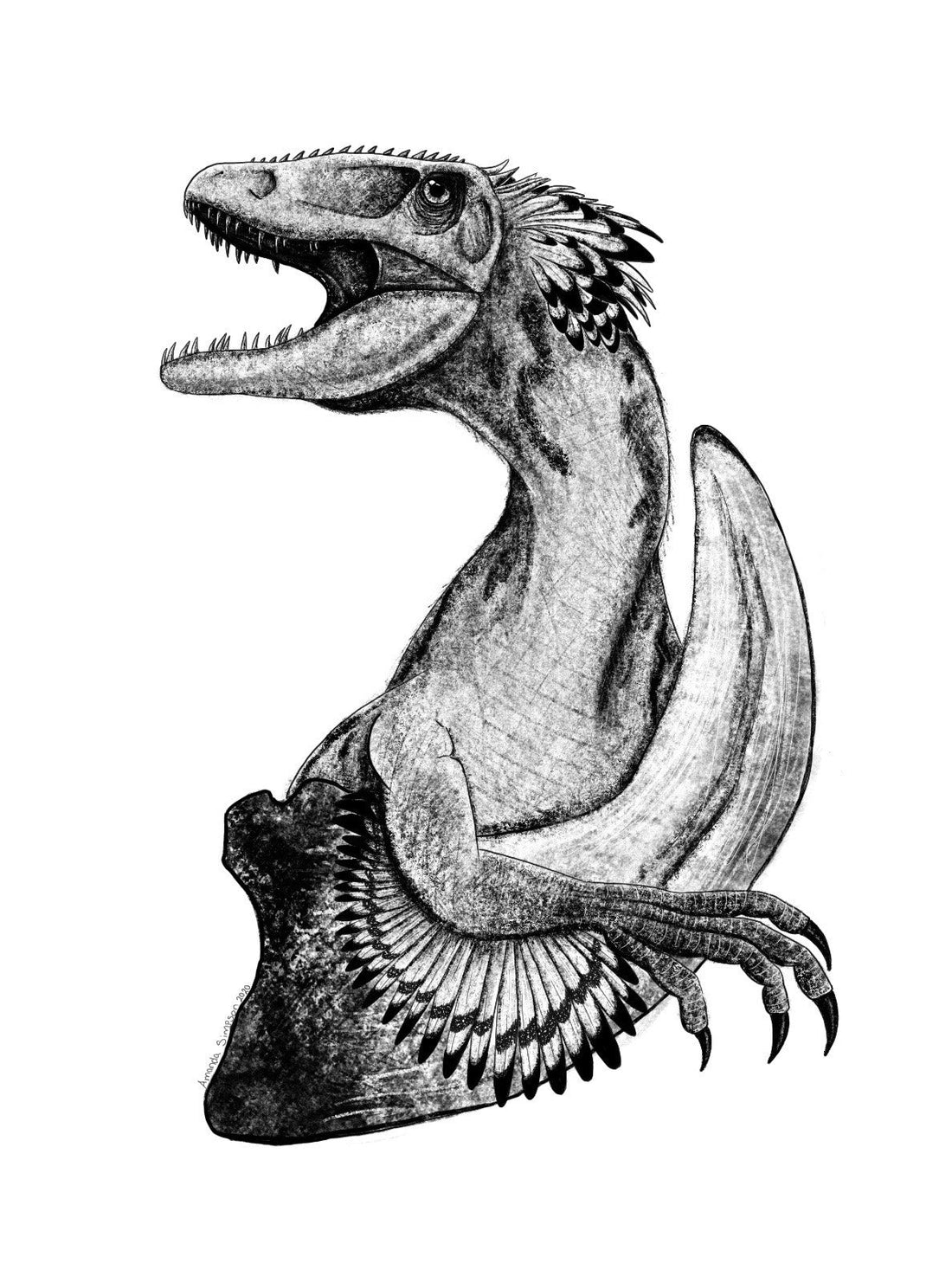
How do we know some dinosaurs have feathers?
Share
How do we know Velociraptor had feathers since we haven’t actually found any feathers?
Despite not having found a feather belonging to Velociraptor paleontologists are confident they were present. Why? Comparative anatomy!
In 2007 a team of paleontologists and anatomists (Drs. Alan Turner, Peter Makovicky, Mark Norell) published a fantastic paper analyzing the bones of Velociraptor (the paper can be read here).
The results can be summed up in the image below.

Label A is the Mongolian Velociraptor arm bone called the ulna. By the way, people have ulnas (technically, the plural is ulnae :-)), as do birds, dogs, reptiles, fish, and all vertebrates. The fact we all share the same skeletal foundation is the lynchpin of comparative anatomy.
Label B is a closeup scan of part of the bone that shows 6 “dots.” Those “dots” are found on the modern-day turkey vulture, a familiar soaring bird known all across the United States that most certainly has feathers and whose bone is shown in Label C
Label D, kind of gruesome, I know, shows a dissected turkey vulture wing, highlighting what feathers look like when attached to the bone.
Label E shows one of the feathers removed, revealing a bump caused by the presence of the feather.
Label F shows the feather turned on its side, demonstrating how a ligament (the arrow) attaches the feather to the bone and how it interacts with the bone to create the “dot.” That “dot” is called a quill knob and is only present when feathers are present. Thus, we know that Velociraptor had to have feathers on its arm!
Because Velociraptor is such a close cousin to Deinonychus, we can assume Deinonychus had feathers too. Further, the dinosaurs called Velociraptors in Jurassic Park were actually based on Deinonychus, as the real Velociraptor was no bigger than a turkey (think a body the size of Thanksgiving Dinner's traditional main meal), while Deinonychus was up to 11’ long and over 200 lbs! Interestingly enough, when Jurassic Park came out, Utahraptor was announced, a raptor much larger than Deinonychus and more in line with the Jurassic Park raptors. Art predicted science! And, because all are very close cousins, it is highly likely that Deinonychus, Utahraptor, and the raptors in Jurassic Park all had feathers (at least on their arms).
Does this mean Tyrannosaurus had feathers? Artists applied the fact that Tyrannosaurus rex is a meat-eating dinosaur and began drawing them with feathers. However, a recent study concluded it was highly unlikely that Tyrannosaurus rex had feathers based on the discovery of actual Tyrannosaurus rex skin impressions.

The figure above comes from the paper and shows skin impressions from the tail, hips, and back of the neck. All are scales, no feathers! The green lines show scale patterns observed by paleontologists. No indication of feathers was found in any patterns either. The paper describes skin impressions from other tyrannosaurids (Albertosaurus, Daspletosaurus, Gorgosaurus, Tarbosaurus) and points out that only scales (at least on their stomach, chest, and tail regions) were found on all of these large carnivores. Thus, not all dinosaurs had feathers.
However, the most famous feathered dinosaurs of all are alive today, and you can look out almost any window to see them...birds!
Dr. Brian Curtice
Literature cited
Phil R. Bell, Nicolás E. Campione, W. Scott Persons, Philip J. Currie, Peter L. Larson, Darren H. Tanke and Robert T. Bakker. 2017 Tyrannosauroid integument reveals conflicting patterns of gigantism and feather evolution. Biol. Lett.13:20170092 http://doi.org/10.1098/rsbl.2017.0092
Turner, Alan & Makovicky, Peter & Norell, Mark. (2007). Feather Quill Knobs in the Dinosaur Velociraptor. Science (New York, N.Y.). 317. 1721. 10.1126/science.1145076.